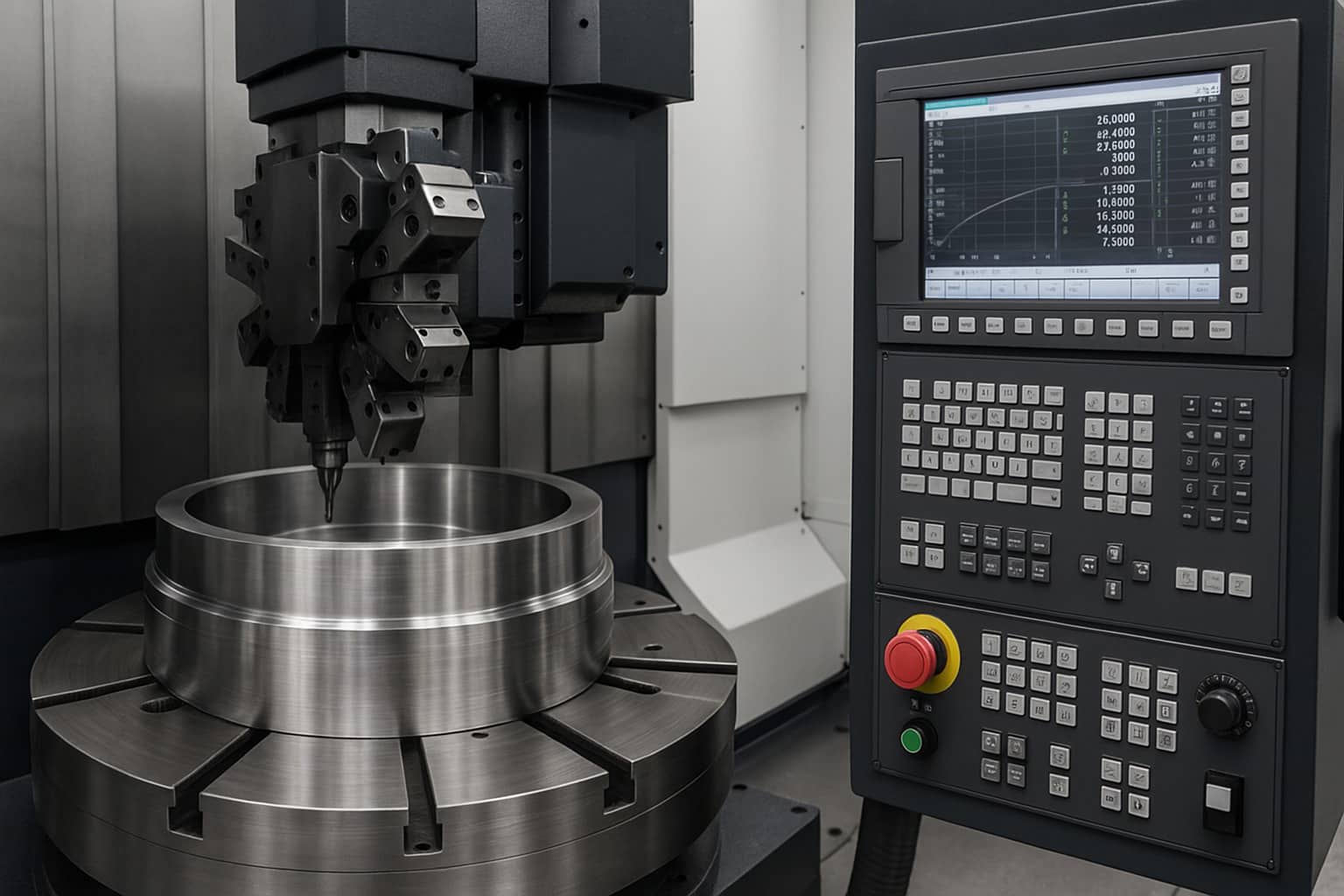
CNC Vertical Turning Machine
In today’s fast-paced manufacturing world, staying ahead means combining speed with precision. That’s where a CNC Vertical Turning Machine (VTM) steps in as a game-changer. Whether you’re working with heavy engine components, turbine parts, or automotive systems, a VTM delivers unbeatable accuracy and efficiency.
In this guide, we’ll walk you through how these machines work, what makes them special, and how they’re transforming industries like aerospace, automotive, and heavy equipment manufacturing.
What is a CNC Vertical Turning Machine?
Let’s break it down: a CNC Vertical Turning Machine is a type of lathe where the spindle is vertically aligned. Unlike traditional horizontal lathes, VTMs are designed to handle large, heavy workpieces that would otherwise be difficult to mount and rotate horizontally.
The workpiece is clamped to a horizontal table (usually a chuck), and the cutting tool moves vertically and radially to shape the material.
Key Features and Components
Here’s what you’ll typically find in a high-quality CNC VTM:
-
Vertical Spindle: Holds the workpiece vertically to allow better handling of weight and size.
-
Tool Turret: Rotates and changes tools automatically during machining.
-
Heavy-Duty Worktable: Built to support large parts with high stability.
-
CNC Controller: Automates operations with high precision.
-
Chip Conveyor & Coolant System: Keeps the machine clean and reduces wear.
These features make CNC VTMs a smart investment for shops focusing on quality and volume
Types of CNC Vertical Turning Machines
Not all VTMs are created equal. Here are the most common types:
| Type | Description | Best For |
| Standard VTM | Simple vertical lathes with basic CNC capabilities. | Small to medium parts |
| Large-Capacity VTM | Designed for massive, heavy-duty parts. | Engine blocks, turbine casings |
| Multi-Axis VTM | Equipped with multiple axes for complex turning and milling. | Aerospace parts, precision components |
How Does a CNC Vertical Turning Machine Work?
1. Setup and Programming
Operators use CAD/CAM software to create part designs and machining instructions. These are uploaded to the machine’s controller, which then automates the entire process.
Automation can reduce setup time by up to 25%.
2. Cutting and Operations
Common operations include:
-
Turning – Shaping the outer diameter.
-
Facing – Flattening the face of the part.
-
Boring – Enlarging internal holes.
-
Grooving & Threading – Adding complex geometries.
Multi-tool turrets enable seamless switching between these processes, cutting down production time.
3. Precision Control
Thanks to CNC automation, these machines consistently deliver:
-
Tolerances as tight as ±0.01 mm
-
Smooth surface finishes
-
Error-free repeatability across batches
Benefits of CNC Vertical Turning Machines
Superior Precision and Quality
These machines are designed to handle tight tolerances and complex geometries with ease. The vertical orientation reduces vibration, ensuring a cleaner finish on every part.
Faster Production
Speed is critical in modern manufacturing. VTMs are built to handle high spindle speeds, fast tool changes, and automatic part positioning.
Cost Efficiency
-
Lower labor costs: Automation reduces the need for constant supervision.
-
Reduced scrap: Precision cuts lead to fewer errors.
-
Durable tooling: Long-lasting tools lower your maintenance costs.
Real-World Applications
🏗 Heavy Equipment Manufacturing
Example: Caterpillar used large-capacity VTMs for engine block production.
Result: 15% faster cycle times and reduced material waste.
✈ Aerospace Industry
Case: Boeing employs multi-axis VTMs to machine turbine blades.
Benefit: Tighter tolerances and more aerodynamic designs.
🚗 Automotive Sector
Factories rely on VTMs for turning gear shafts and drivetrain components, cutting turnaround time and boosting finish quality.
Expert Insights and Future Trends
“Vertical turning centers are essential for complex, large parts,” says John Doe, a machining specialist with 20+ years in the field.
“Automation and high-speed control are shaping the future,” adds Jane Smith from CNC Tech Solutions.
Here’s what’s next:
-
IoT Integration: Real-time data tracking for predictive maintenance.
-
AI Tool Path Optimization: Reduces cycle time while improving accuracy.
-
Affordability: Smaller shops now have access to cost-effective VTM options.
Actionable Tips for Maximizing Your Investment
To get the most out of your CNC Vertical Turning Machine:
-
Choose the Right Size: Match machine capacity to your typical workpiece.
-
Train Your Team: CNC expertise reduces downtime and errors.
-
Leverage Automation: For repeat jobs, automation can cut production time significantly.
-
Maintain Regularly: Well-maintained tools = consistent quality and longer machine life.
Final Thoughts
A CNC Vertical Turning Machine is more than just a tool—it’s a manufacturing powerhouse. It improves accuracy, boosts output, and lowers operational costs. Whether you’re in aerospace, automotive, or industrial machining, investing in a VTM could be the smartest decision for your shop.
Stay updated with tech trends, train your team, and maintain your equipment regularly—and you’ll unlock all the advantages this machine has to offer.
